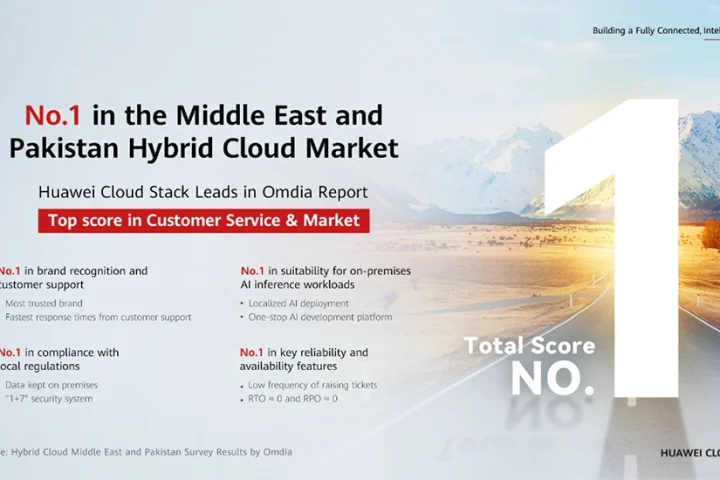Nutanix announced Saudi-specific findings of its fourth global Enterprise Cloud Index survey and research report, which measures enterprise progress with cloud adoption. It is apparent that the adoption of cloud services in Saudi Arabia is growing, driven by national efforts such as the Kingdom’s vision for Cloud-First Policy, which was announced in October 2020.
Nutanix’s ECI report finding supports this vision, as the research has showed that 81% of respondents in Saudi Arabia agree that multicloud is the ideal operating model for their IT infrastructure. Saudi companies appear to be in the planning phases of multicloud adoption, currently maintaining multiple independent infrastructures over which they’re distributing data and workloads.
Private clouds slightly dominate the infrastructure landscape, indicating some cloudification of legacy applications. 25% of respondents in Saudi continue to exclusively operate three-tier data centers with the intent to slash data center use to 9% in 2024; while ramping up the use of integrated multiclouds.
Like most ECI respondents around the world, those from Saudi Arabia said they face inter-cloud security, mobility, management, and skillset challenges as they embark on infrastructure change. The continued emergence and maturity of containers and tools, that abstract data and applications from underlying cloud platforms, centralize and integrate operations, and automate processes across cloud platforms, should alleviate these difficulties over time. The Kingdom has foreseen that with increased adoption, maintaining users’ data privacy and ensuring cybersecurity will remain a top-of-mind moving target indefinitely.
Commenting on the findings, Mohammad Abulhouf, Senior Sales Director KSA, Bahrain & Qatar at Nutanix said: “Nutanix is committed to supporting the Kingdom’s vision of cloud-first and cloud-smart. Such cloud-first policies are very effective in enhancing the awareness of cloud services in the region, which in turn will accelerate adoption. Our research indicates that the adoption of multiple clouds, private or public, is underway in Saudi Arabia. Companies in the Kingdom are looking to multicloud to better service their customers and citizens. Cloud is a journey, not a destination; and Nutanix is committed to the region’s strategy by supporting organizations with the technology, expertise, and industry leading customer support.”
Key findings from this year’s report include:
- Multicloud is the dominant IT model worldwide among ECI companies, and the adoption rate in Saudi Arabia is on the rise: Early adopters in the Kingdom which are (25%) of ECI respondents from Saudi Arabia, said they currently use multiple clouds, private or public, as their most common IT deployment model. Private cloud-only deployments slightly dominate in Saudi Arabia, though workloads appear to be distributed somewhat evenly among independent private clouds, three-tier data centers, multiclouds, and public clouds. This diverse distribution implies IT shops in transition and in the early stages of their multicloud initiatives. Respondents from Saudi Arabia said they’ll accelerate multicloud adoption quickly, citing intentions to increase penetration to 57% within three years.
- Multicloud motivators. The reason Saudi respondents cited most often for using or planning to use multicloud, was to better support customers (47%). Second was to improve remote work and collaboration (36%). In equal numbers, 35% also mentioned the ability to scale easily and on-demand, business continuity improvements, and executive cloud mandates as driving IT infrastructure change in their organizations.
- Public cloud adoption: Respondents from Saudi Arabia indicated that they are in the early stages of public cloud use. More than half the respondents there reported using no public cloud service at all (54%). Just 5% said they use the services of three or more public cloud providers.
- Application mobility: A high majority of respondents in Saudi Arabia (83%) said they moved applications from one IT infrastructure to another last year. This is a high rate of mobility, but it is coupled with legacy data center use, which indicates early planning phases of multicloud strategy. The data indicates that struggles to overcome impediments such as skills scarcity and management and operational complexity are slowing deployment. Among Saudi companies that moved one or more applications last year, the two biggest reasons were to improve security and regulatory compliance and enable faster application development. Heightened activity will likely soon follow: 81% said container technology—which packages applications with all their dependencies for simplified movement among cloud infrastructures—was important to their companies now or would be within 12 months.
- Security concerns reign supreme. While multicloud adoption is rising, these are early days that create some challenges. Both in Saudi Arabia (54%) and globally (49%), respondents mentioned managing security across cloud borders most often as a multicloud management difficulty. Saudi respondents named maintaining consistent performance, second most often, notably more than average, while the task of integrating data across cloud environments consistently ranked in the top three most-mentioned issues among ECI respondents.
- The challenges of any new technology are compounded when expertise for implementing and managing it is hard to find. The majority of Saudi respondents (83%) said they lack some internal IT skills needed to meet business demand, specifically in artificial intelligence/machine learning (50%) and IT automation (45%). In addition, 84% agreed that to succeed, their organizations need a way to simplify the management of multicloud environments. The skills deficits and concerns over increasing IT complexity were common among most ECI respondents, and they underscore a growing requirement for tools that integrate and, to a degree, automate processes across cloud platforms.
For the fourth consecutive year, Vanson Bourne surveyed 1,700 IT decision-makers around the world in August and September 2021. The respondent base spanned multiple industries, business sizes, and the following geographies: the Americas; Europe, the Middle East, and Africa (EMEA); and the Asia Pacific Japan (APJ) region.

























